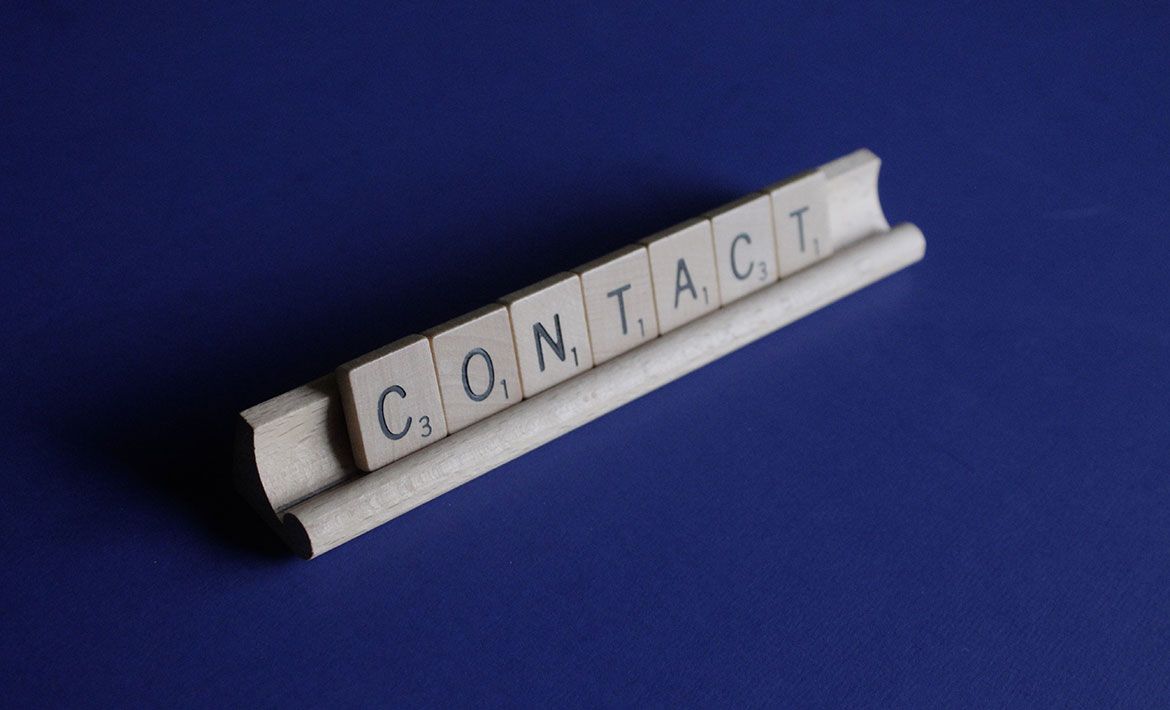Handling sales objections is an art. You can only master it once you have had plenty of practice in not getting upset when your prospects hit you with a no. Treat it as a challenge.
In our previous article we looked at the dos and don'ts of handing sales objections; check it out. Since then, we’ve been busy writing rebuttals that work so that you could focus on something else.
This article looks at the most common sales objections you can face, and tells you how to handle sales objections.
Let’s get growing!
If you want to turn a no into a yes, you need to learn how to expect, accept and embrace them. Spoiler alert: it’s much easier to do when you are familiar with the most common sales objections prospects use to turn your sales outreach down.
Sales objection #1: We don’t really need it.
What the prospect is saying is that they’re unaware of their current business problems and how they can be solved with the help of your product or service. You just need to proceed with asking qualifying questions to find out what kind of business workflows you’re dealing with, then match your prospect up with the appropriate functionality of your product.
Here are a couple of lines you could include in response...
💬 "That’s what I expected to hear! I’d be surprised if you didn’t have it all figured out. But let me just tell you that we’ve expanded the scope of our features, so you can streamline your business workflows more efficiently with [product]."
💬 "Could you, please, tell me more about the way things go in your business? Perhaps, there’s a feature of [product] that could make your business even more profitable?"
💬 "I understand! Perhaps, you could take advantage of our trial period to make sure you want to really turn this offer down. [Product] is really perfect for aiding your business success. For example, [feature 1] can help you with [process 1], and you can also use [feature 2] to handle [process 2]."
Sales objection #2: The price is too high.
This sales objection is actually a 2-in-1. Depending on the part the prospect puts emphasis on, it could either be sales objection 2.1. “It's too expensive.” or sales objection 2.2. “We don't have the budget for this.”
The first objection stems from the prospect not seeing the value of the offer; they can’t match up the benefits they’d receive with the price they’d have to pay. The second objection is a more gentle ‘no’; perhaps, the prospect would negotiate if they had more resources available.
Both are favourable. If the prospect is talking about the money question, it’s safe to say they’re interested. Before explaining how to handle this situation, I need to talk about how not to go about financial objections...
First of all, don’t try to justify the price by telling your prospect how expensive it is to make the product/ service. They simply don’t care, end of discussion. Secondly, don’t rush into giving discounts left, right, and centre. You’ll come off as a desperate vendor, which can prompt the prospect into thinking your offer isn’t very good.
Instead, you should...
- Track your prospect’s business growth and see how you can help them get to a place where your offer would fit into their business.
- Talk about the features your product has and how the prospect can benefit from using those.
- Make sure you put emphasis on the irreplaceable value of your product, so the prospect makes its purchase a priority.
And here’s how to put these techniques into your sales objection responses...
💬 "I understand. We have a couple of more affordable offerings that may be a better fit for your current growth levels and budget. Please, allow me to explain them."
💬 "Let me go through [product's] features and how it can help with the issue of [prospect problem] that you shared with me."
💬 "I see your point. However, we’ve recently worked with a company that’s in a position similar to yours. By purchasing [product], they’ve actually managed to increase their ROI and allocate their new revenue to other parts of the budget."
Sales objection #3: We don’t need it right now.
Lack of urgency is one of the most common sources of sales objections. Unless there’s an acute need for your product, it’s likely that your prospect won’t take immediate action and will turn your offer down.
It’s essential to know your target audience well and be aware of all the seasonal fluctuations that affect their sales cycle. That way you can catch them at the most appropriate time and close your deal faster.
Example
If you’re a SaaS business looking to sell chatbot software to an e-commerce company, you might want to wait till the Holiday season starts creeping from around the corner. It’s usually the Thanksgiving through Christmas period when e-commerce businesses are the busiest and would love to invest in a chatbot to streamline their communication with customers.
Moreover, you can play FOMO with your lead and create an artificial sense of urgency. Just remember to pair it with a strong value proposition, so your lead has no choice but to continue with a conversation. Here are some killer lines to include in your responses to overcome the lack of urgency sales objections...
💬 "Is X goal no longer or less of a priority for you?"
💬 "When are you hoping to achieve your goals? Is it possible to do so with your current business workflows?"
💬 "What happens to your goals if you don't act now?"
💬 "How would your business situation be different if I reached out to you in three months time?"
💬 "Is it just the timing that’s not right for you, or does something else about this offer concern you?"
Sales objection #4: Thanks but we already use a competitor.
Good news, your prospect has already realised the need for the product/service you offer. All you need to do is talk about your product. A simple matter of convincing your prospect that you can provide them with a better value offer than your competitor.
The great thing about these objections is that even if you fail to overcome them, you still gain an invaluable insight into the competition; what they do and how they appeal to the target audience.
Here are a couple of things to mention in your response to this objection…
💬 "Why did you choose [competitor]? What's working well? What's not? Allow me to explain how [product] is different."
💬 "[Competitor] is a great vendor, but perhaps we could be a better fit for you. Let me tell you how you can benefit from using our product."
💬 "How is your relationship with [competitor]? Perhaps I can offer a discount to make up for the cost of switching over to work with us."
Sales objection #5: I’m not authorized to sign this.
The world of B2B is notorious for its long chains of command; it can be particularly difficult to reach out to the right person straight away.
When prospecting, you want to aim at the decision drivers of the companies you target, the C-Suite of the business. But it’s not always possible to get through to the person who has the authority to make executive decisions on the first try. That’s why the ‘I don’t think I’m the right person for you to talk to’ objection is so common.
Luckily, it’s also one of the easiest to handle, too. All you need to do is ask your prospect about who you could talk to regarding your offer and ask them to pass the information up the chain. Here are a couple of rebuttal examples suggestions…

💬 "Oh, okay. I’ve reached out to you because we often work with people in a similar position to you. Could you, please, refer me to someone who I could speak to in regards to this offer?"
💬 "Thanks for your response! I believe that [product] is a great fit for your company, so it would be a shame if your managers didn’t get a chance to look into the offer. Perhaps, you could send me their contact information so I could discuss it with them directly?"
💬 "That’s okay! Could you please give us a clue who to reach out to instead?"
Sales objection #6: I’m not sure you’re a good fit for my company.
There are lots of different reasons why your prospect thinks that way - it could be that they’ve read a bad review about your business online, or you don’t offer the features they need, or your product is too complicated. You can’t possibly guess which one of those is true without asking first. Before following the guidelines from your sales strategy playbook, you need to clarify what stands behind the objection.
The first email you send in response to this claim should contain something along the lines of...
💬 "Why?"
💬 "Please, tell me what you’re looking for at the moment?"
💬 "Are there any specific reasons why you think that way? Perhaps, I could tell you more about our company and [product]"
💬 "What are your goals for the upcoming period? It will help me to guide you on how our product can help you achieve this faster."
Harsh(er) sales objections
While these are significantly less common, you still need to remember that there are all kinds of people receiving and answering your sales emails. Although the majority of them are polite and respectful, there is an odd couple of managers that can hit you with a harsh objection.
"Get back to me next quarter."
Translation: ‘I’m not interested in your offer, but I don’t want to be rude (although I’ve had a bad day, so I don’t care about being a bit passive-aggressive). I hope you forget about this conversation and never reach out to me again.’
While the prospect is clearly blowing you off, you can still turn the tables. Just keep the conversation going instead of disappearing immediately; clarify why it is that they don’t want to speak to you now. Then, proceed with one of the objection handling techniques we covered earlier in the article.
Here are some ways to reveal the true reasons why your prospect is mugging you off...
💬 "I definitely will reach out to you next quarter. But could you, please, fill me in about your plans regarding the next quarter so I could send the most appropriate information your way."
💬 "Sure, absolutely no problem. Could you let me know where your business is headed at the moment? That way, I could match it up with our product’s features."
"I’m not interested."
This objection is pretty straightforward, abrupt and self-explanatory... or is it?..
Imagine...
Think about your most recent trip to the mall. I bet there was a situation when you’d go to the store looking to buy something but would change your mind the minute the consultant starts harassing you with the ‘Anything I can help you with?’ question.
It’s annoying and off-putting. Your first defensive reaction is to politely (or not) decline. But really, ‘I’m just looking’ isn’t a ‘no’. It’s just a scaredy-cat response of someone who needs more time to think about your offer in peace.
It’s not only true for B2C sales; the world of B2B is the same. Your B2B prospects aren’t uninterested, they just don’t know there’s interest for them in the first place. That’s why, your rebuttal should not seek to overcome the blowoff, but rather acknowledge it and slide past it. Here are a couple of ways to do that…
💬 "That’s fine, [Name]. A lot of people I talk to tell me the exact same thing at first. But as they learn more about [product] and understand how it can benefit their business, they end up being glad they took a few minutes to listen. Let me briefly explain what [product] can do for you…"
💬 "I didn’t expect you to be interested in this straight away - you don’t know anything about [product] yet! But let’s change it. Let me show you how you can overcome [challenge] and achieve [outcome] with [our product]."
💬"Trust me, I understand that you’re busy and have lots of similar emails chilling in your inbox right now. But the good news is that bearing just 30 seconds with me right now could change the way you do business, and could help you [achieve your quotas / save thousands of dollars / increase your sales velocity]. Let me quickly describe how we’ve helped hundreds of businesses like yours to grow…"
"Just send some information my way."
Good news: this isn’t really an objection, but rather light resistance. You just need to break through that initial wall. Bad news: your prospect believes there’s no value in your offer and wants to get rid of you in the nicest way possible.
But you can still use this situation to your advantage. Instead of immediately sending some generic information about your company, you can qualify the prospect first. Instead of trying to prematurely present or pitch your solution to the person on the other end, ask them some open-ended questions to find out whether they’re the right person to talk to, what their pain points and needs are.
These questions will also help you build more rapport with the company and find out more about their current business situation. Then, you can communicate the value of your product more effectively and only offer the information that resonates the most with the prospect.
💬 "I’d be more than happy to share more information with you. Please, tell me what you’d be interested in learning more about?"
💬"Sure, I’ll send it your way. I just want to make sure that I send you the most relevant piece of information, so could you please tell me are you guys more interested in X or Y?"
💬 ‘I’m happy you’re interested in learning more about our company and [product]. I can send you some information about us, but I feel like it’s more efficient to hop on a call and discuss all the benefits [product] can bring to you. Do you have half an hour next week? Then, I could answer questions so that you’d know exactly which materials you want to receive from me."
"How did you get my information?!"
‘Data is the new oil’, so it’s only natural your prospects are defensive of their contact information.
As long as you’re not pulling email addresses and phone numbers from leaked databases online (don’t forget, under the GDPR legislation, it’s illegal for businesses to contact people that haven’t deliberately opted in for that) and there’s a genuine reason why you’re contacting them, you should be fine.

Just remind your prospects that there’s value in your offer for them. Tell them exactly how you have their contact information in your database - either that they’ve filled out a web form on your website, or signed up to your webinar, or requested more information at a real-life event.
Alternatively, you can just say that you stumbled across their website and reached out to them because you think you have a perfect-fit solution for their business.

Here’s some examples of rebuttal message to use in this scenario...
💬 "I just stumbled across your website when doing my research, and immediately thought that [our product] would be a great fit for your business. They’re practically a match made in heaven!"
💬 "You’ve filled out a form on our website where you left your contact information. I’m just getting back at you with an offer that might be of interest to you."
💬 "We met at [event] - and you mentioned that you would be interested in hearing more about [product]. Let’s discuss how your business can benefit from it."
"F**k off, I hate you."
Although it can hurt your ego, at least you know the problem isn’t in your product or its value.
You don’t have to become lifelong best friends with everyone you’re trying to sell your product to, but getting in their good graces definitely helps. If you vigorously don’t get along with your prospect no matter what you do, it’s best to sign them off to a different sales rep.
That way, you kill several birds with one stone: spare yourself from annoying interaction, resolve a seemingly dead-end objection, and don’t lose your deal for good.
Here are a couple of rebuttal templates for you to overcome this objection…
💬 "I’m sorry you feel this way about our communication. Can I hand you off to my colleague [Name] to continue the conversation? Perhaps, they’ll be a better fit."
💬 "I’m sorry to hear that! Perhaps, you would like to discuss the offer with someone else? I could connect you with my colleague, [Name], instead."
Yahoo! No more objections for you.
Table of Contents
Crack the sales formula with CRM Lab
Twice a month, receive actionable CRM content to your inbox.



